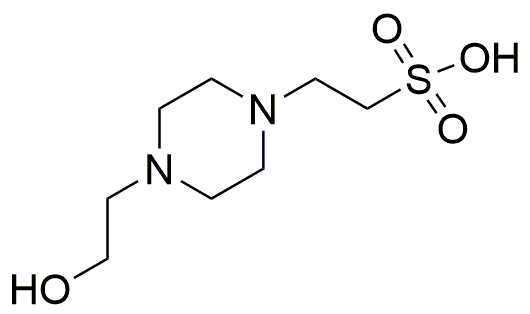HEPES is widely utilized in research focused on various applications that enhance scientific understanding and practical outcomes.
- Cell Culture Media: HEPES is commonly used as a buffering agent in cell culture media, helping to maintain stable pH levels, which is crucial for cell viability and function.
- Biochemical Assays: It serves as a key component in biochemical assays, providing a controlled environment that ensures accurate measurements of enzyme activity and other biochemical reactions.
- Pharmaceutical Formulations: HEPES is incorporated into pharmaceutical formulations to stabilize active ingredients, improving the efficacy and shelf-life of medications.
- Protein Purification: In protein purification processes, HEPES helps to maintain optimal conditions, enhancing the yield and purity of proteins, which is vital for research and therapeutic applications.
- Biotechnology Applications: Its role in biotechnology, particularly in the production of monoclonal antibodies and vaccines, highlights its importance in developing new therapies and diagnostics.
General Information
Properties
Safety and Regulations
Applications
HEPES is widely utilized in research focused on various applications that enhance scientific understanding and practical outcomes.
- Cell Culture Media: HEPES is commonly used as a buffering agent in cell culture media, helping to maintain stable pH levels, which is crucial for cell viability and function.
- Biochemical Assays: It serves as a key component in biochemical assays, providing a controlled environment that ensures accurate measurements of enzyme activity and other biochemical reactions.
- Pharmaceutical Formulations: HEPES is incorporated into pharmaceutical formulations to stabilize active ingredients, improving the efficacy and shelf-life of medications.
- Protein Purification: In protein purification processes, HEPES helps to maintain optimal conditions, enhancing the yield and purity of proteins, which is vital for research and therapeutic applications.
- Biotechnology Applications: Its role in biotechnology, particularly in the production of monoclonal antibodies and vaccines, highlights its importance in developing new therapies and diagnostics.
Documents
Safety Data Sheets (SDS)
The SDS provides comprehensive safety information on handling, storage, and disposal of the product.
Product Specification (PS)
The PS provides a comprehensive breakdown of the product’s properties, including chemical composition, physical state, purity, and storage requirements. It also details acceptable quality ranges and the product's intended applications.
Certificates of Analysis (COA)
Search for Certificates of Analysis (COA) by entering the products Lot Number. Lot and Batch Numbers can be found on a product’s label following the words ‘Lot’ or ‘Batch’.
Numéro de catalogue
Numéro de lot/série
Certificates Of Origin (COO)
This COO confirms the country where the product was manufactured, and also details the materials and components used in it and whether it is derived from natural, synthetic, or other specific sources. This certificate may be required for customs, trade, and regulatory compliance.
Numéro de catalogue
Numéro de lot/série
Safety Data Sheets (SDS)
The SDS provides comprehensive safety information on handling, storage, and disposal of the product.
DownloadProduct Specification (PS)
The PS provides a comprehensive breakdown of the product’s properties, including chemical composition, physical state, purity, and storage requirements. It also details acceptable quality ranges and the product's intended applications.
DownloadCertificates of Analysis (COA)
Search for Certificates of Analysis (COA) by entering the products Lot Number. Lot and Batch Numbers can be found on a product’s label following the words ‘Lot’ or ‘Batch’.
Numéro de catalogue
Numéro de lot/série
Certificates Of Origin (COO)
This COO confirms the country where the product was manufactured, and also details the materials and components used in it and whether it is derived from natural, synthetic, or other specific sources. This certificate may be required for customs, trade, and regulatory compliance.


